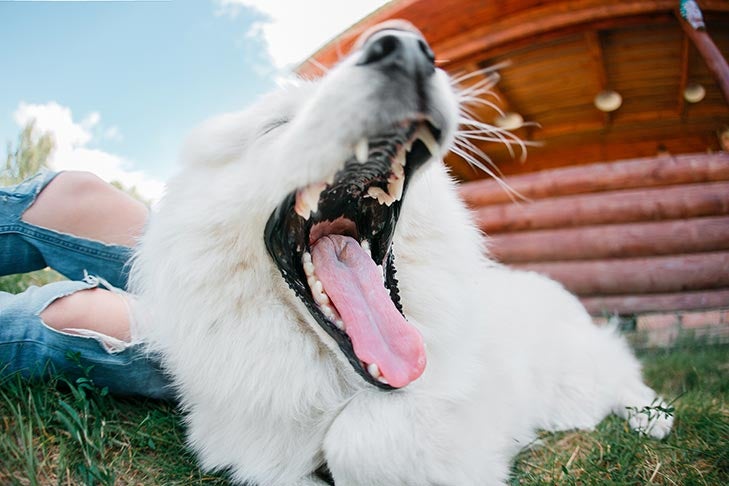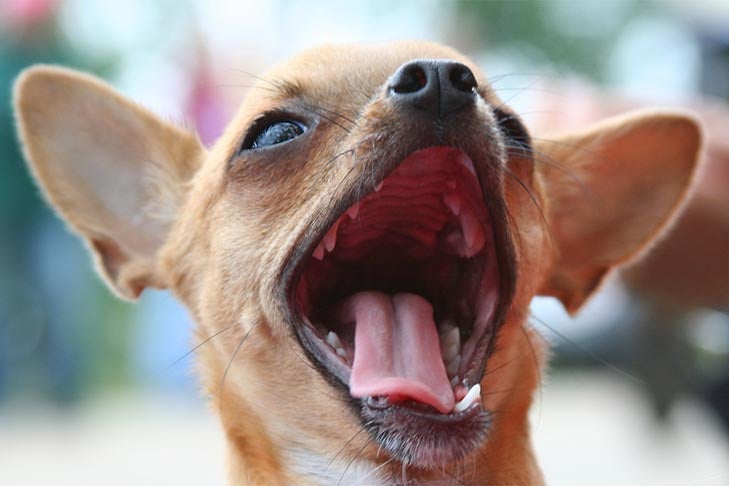
Your dog’s dental health is just as important as your own and should be one of the things you take care of on a daily basis, especially since it’s not something your pup can do for himself. As you think about your best friend’s dental care, have you ever wondered exactly how many teeth dogs have? Just like little kids, puppies start out with temporary teeth that eventually fall out to make way for their adult teeth.
A puppy has 28 deciduous teeth, also known as milk teeth, which begin to appear two weeks after birth and are usually completely grown in 8-10 weeks later,” says Dr. Rachel Barrack, DVM, owner of Animal Acupuncture in New York City.
It’s hard to miss the sharp, razor-like teeth in a puppy’s mouth, especially when that puppy is nipping at you. The thought might not have crossed your mind as to why these teeth feel like needles, but if it has, Dr. Barrack points out that puppies need extra help to chew at this stage because their jaws are not as strong as those of adult dogs. The sharp teeth make it easier to chew when they begin eating more solid food and gnaw on treats, toys, and bones.
Unlike young kids, dogs lose their first teeth very quickly, due to their rapid maturation. Depending on the dog’s size and breed, Dr. Lucas White of Sunset Veterinary Clinic says the incisors are the first to fall out at around 4 months of age, followed by the canine teeth, usually at 5-6 months. Then the premolars and molars will come in between 5-8 months, and eventually, there will be a total of 42 adult permanent teeth. Any puppy teeth that don’t fall out will need to be extracted by a veterinarian.

The Four Types of Teeth
Within your adult dog’s mouth, there are four different types of teeth, and they each serve a specific purpose. “As descendants of wolves, dogs need different types of teeth for different functions,” says Dr. White. Here’s a breakdown of the four types:
Incisors – The small teeth in the front of your dog’s mouth, used to tear meat from a bone and for self-grooming. Your dog has a total of 12 incisors, six on the top and six on the bottom.
Canines – These are the pointy teeth on the top and bottom of both sides of the mouth, sometimes referred to as “fangs.” These four teeth, two on top and two on the bottom, are used to puncture and hold on to something and are what make dogs so good at tug-of-war.
Premolars – Located behind the canine teeth, these 16 teeth (eight on top and eight on the bottom) are used for shearing. If you catch your dog chewing on something with the side of his mouth, he’s using his premolars.
Molars – These flat, heavy-duty teeth are found in the back of the mouth and are used for grinding and chewing. You’ll find four molars on the top of your dog’s mouth and six on the bottom.
Since your dog has a mouthful of teeth, it’s extremely important that you pay attention to his dental health, just as you would your own. Regular brushing, along with consistent oral health exams and dental cleanings when your veterinarian deems them necessary, will ensure dental and periodontal health. Make sure to use toothpaste formulated specifically for dogs; human toothpaste often contains ingredients like xylitol, which is toxic to dogs. Hard chew toys are also an option when it comes to dental hygiene and a good alternative for canines that do not tolerate brushing.

